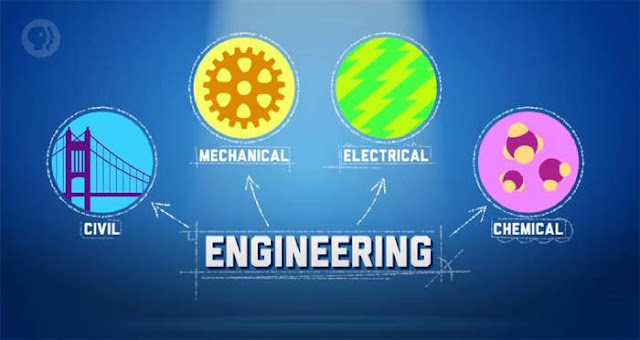Featured
- Get link
- X
- Other Apps
Emerging Trends in Electrical Engineering
Electrical engineering is a constantly evolving field, driven by rapid technological advancements and the ever-increasing demand for innovative solutions in various industries. In this complete guide, we will explore some of the most promising emerging trends in electrical engineering and their potential to shape the future.
1. Renewable Energy Integration:
Microgrids: The integration of small-scale, localized power
grids, known as microgrids, is on the rise. These self-contained systems can
operate independently or in conjunction with the main electrical grid,
providing resilience and sustainability, especially in remote areas.
Energy Storage: Advanced energy storage solutions, such as
high-capacity batteries and flow batteries, are being developed to store excess
energy from renewable sources, ensuring a stable and reliable power supply.
Grid-Forming Inverters: Grid-forming inverters are
revolutionizing renewable energy integration by allowing renewable sources like
solar and wind to operate as primary power sources, reducing reliance on fossil
fuels.
2. Electrification of Transportation:
Electric Vehicles (EVs): The acceptance of electric vehicles
continues to grow, leading to innovations in battery technology, charging
infrastructure, and vehicle-to-grid (V2G) systems. EVs are not limited to cars;
electric trucks, buses, and even planes are in development.
Autonomous Vehicles: Self-driving vehicles are on the
horizon, requiring advanced sensors, communication systems, and control
algorithms. Electrical engineers are essential in developing the autonomous
technology that will form the future of transportation.
3. Internet of Things (IoT):
Edge Computing: IoT devices are generating massive amounts
of data. Edge computing, which processes data locally on devices or gateways,
reduces latency and conserves bandwidth, making IoT applications more
efficient.
5G and Beyond: The rollout of 5G networks is enabling faster
and more reliable IoT connectivity. Engineers are already exploring future
generations of wireless technology, including 6G, to meet the demands of IoT.
Security: As IoT devices become ubiquitous, cybersecurity
for IoT is paramount. Electrical engineers are working on secure communication
protocols and encryption methods to protect IoT ecosystems from cyber threats.
4. Artificial Intelligence (AI) & Machine Learning (ML):
AI Hardware: Specialized hardware, like AI accelerators and
neuromorphic chips, is being developed to accelerate AI and ML algorithms.
These advancements are crucial for applications ranging from autonomous
vehicles to healthcare diagnostics.
AI in Power Grids: AI is being employed to optimize power
grid management, predictive maintenance, and energy distribution, enhancing the
efficiency and reliability of electrical grids.
Natural Language Processing (NLP): NLP is making strides in
applications such as voice assistants, language translation, and sentiment
analysis, leading to more natural and human-like interactions with technology.
5. Quantum Computing:
Quantum Hardware: Quantum computing hardware is advancing,
with companies and research institutions developing more stable qubits and
scalable quantum processors. Quantum computers have the possible to solve
complex problems in cryptography, materials science, and optimization.
Quantum Algorithms: Engineers are designing quantum
algorithms that can leverage the unique capabilities of quantum computers.
These algorithms could revolutionize fields such as drug discovery, supply
chain optimization, and climate modeling.
Quantum Communication: Quantum communication systems,
including quantum key distribution (QKD), are being explored for ultra-secure
communication. These systems rely on the principles of quantum mechanics to
provide unbreakable encryption.
6. Energy Efficiency and Power Electronics:
Wide-Bandgap Semiconductors: Materials like silicon carbide
(SiC) and gallium nitride (GaN) are allowing the development of more efficient
power electronics. These semiconductors can handle higher voltages and
temperatures, reducing energy losses in electrical systems.
Digital Twins: Digital twin technology creates virtual
replicas of physical systems, allowing engineers to simulate and optimize the
performance of electrical grids, buildings, and industrial processes for
enhanced energy efficiency.
7. Biomedical Engineering:
Neuromorphic Engineering: Engineers are developing
neuromorphic hardware that mimics the architecture and functionality of the
human brain. This technology holds promise for advanced AI, brain-computer
interfaces, and medical devices.
Implantable Electronics: Implantable medical devices, such
as neurostimulators and bioelectronics, are advancing to provide personalized
healthcare solutions and improve the quality of life for patients with chronic
conditions.
8. Space Exploration and Satellite Technology:
CubeSats: Small satellites, known as CubeSats, are becoming
increasingly popular for space research and communication. Electrical engineers
are working on miniaturized and cost-effective components for CubeSats.
Space-Based Solar Power: The concept of collection solar
energy in space and transmitting it to Earth is gaining attention. Electrical
engineers are exploring space-based solar power as a potential sustainable
energy source.
9. Environmental Monitoring and Sustainability:
Smart Grids and Environmental Sensors: Smart grids and
environmental sensors are being combined to monitor and reduce energy
consumption in real-time, contributing to sustainability efforts.
Climate Modeling: Electrical engineers are developing
advanced climate modeling systems that use supercomputers and high-performance
computing to simulate and understand complex climate patterns and phenomena.
Conclusion
Electrical engineering is at the forefront of technological
innovation, driving advancements in renewable energy, transportation,
communication, AI, quantum computing, and more. As these emerging trends
continue to evolve, electrical engineers will play a pivotal role in shaping a
future that is more sustainable, connected, and technologically advanced. The
interdisciplinary nature of electrical engineering ensures its relevance in
addressing complex challenges and unlocking new opportunities across a wide range
of industries.
- Get link
- X
- Other Apps
Popular Posts
Challenges And Debates Sociotechnical Systems
- Get link
- X
- Other Apps


Comments
Post a Comment